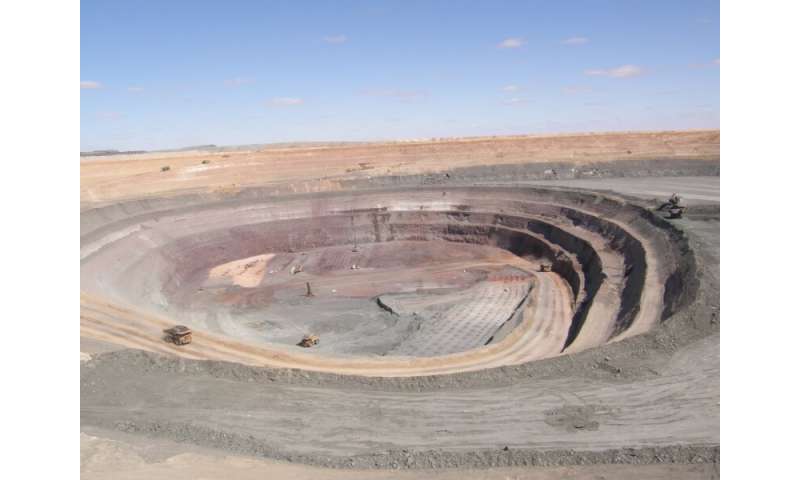Researchers focused on improving safety use muons to scan Australian mine site
In a world first, Swinburne University of Technology spin-out mDetect has used particles derived from outer space, known as muons, to scan a major Australian mining tailings storage facility.
mDetect deployed its ground-breaking technology at the Prominent Hill mine site owned by BHP, one of the world's biggest mining companies. The deployment took place at the company's tailings storage facility, located 650km north-west of Adelaide, South Australia.
"Together, through cutting-edge innovation and technology, we're making mining environmentally safer," said mDetect CEO Professor Alan Duffy, astrophysicist, and Swinburne's Pro-Vice Chancellor, Flagship Initiatives.
Mining companies worldwide use tailings dams to manage potentially hazardous by-products. The number of catastrophic mine tailings dam failures is increasing globally and with it the risk of devastating environmental effects.
The breakthrough technology uses muons—a subatomic particle from space—to take Xray-like scans of the tailings dam structures. The resulting visualizations can reveal abnormalities or weaknesses in the dams, such as erosion of material within the wall, or water seepage from piping features.
In this way, the data acts as an early warning system that can safeguard mine sites and prevent potential structural and environmental disasters.
mDetect's muon technology can revolutionize how mining companies like BHP monitor the stability of their tailings dams and prevent pollution from mining operations—a critical environmental outcome.
mDetect's CEO, Alan Duffy, and CTO, Shanti Krishnan, presented the use case at the Australasian Institute for Mining and Metallurgy (AusIMM) Mine and Waste Tailings Conference in Brisbane today.
Professor Duffy says the devices' compact size, connectivity and transportability makes them ideal for installing at remote mining sites.
"Our approach is 'deploy, depart, detect'—we go there, set up and leave. Our above-ground telescopic muon detectors are portable and non-invasive, which makes monitoring and imaging safer, more cost-effective, and extremely adaptable," Professor Duffy said.
Previously, muon technology has only been used above-ground in highly experimental cases, such as for scanning through pyramids and volcanoes.
Throughout the project, mDetect worked closely with geotechnical engineers at BHP's Prominent Hill Tailings Storage Facility to analyze what the density results implied for the structure and composition of the wall.
"The Prominent Hill team has been incredible to work with. We received outstanding geotechnical advice from the tailings metallurgists and specialist structural geologists."
Provided by Swinburne University of Technology
